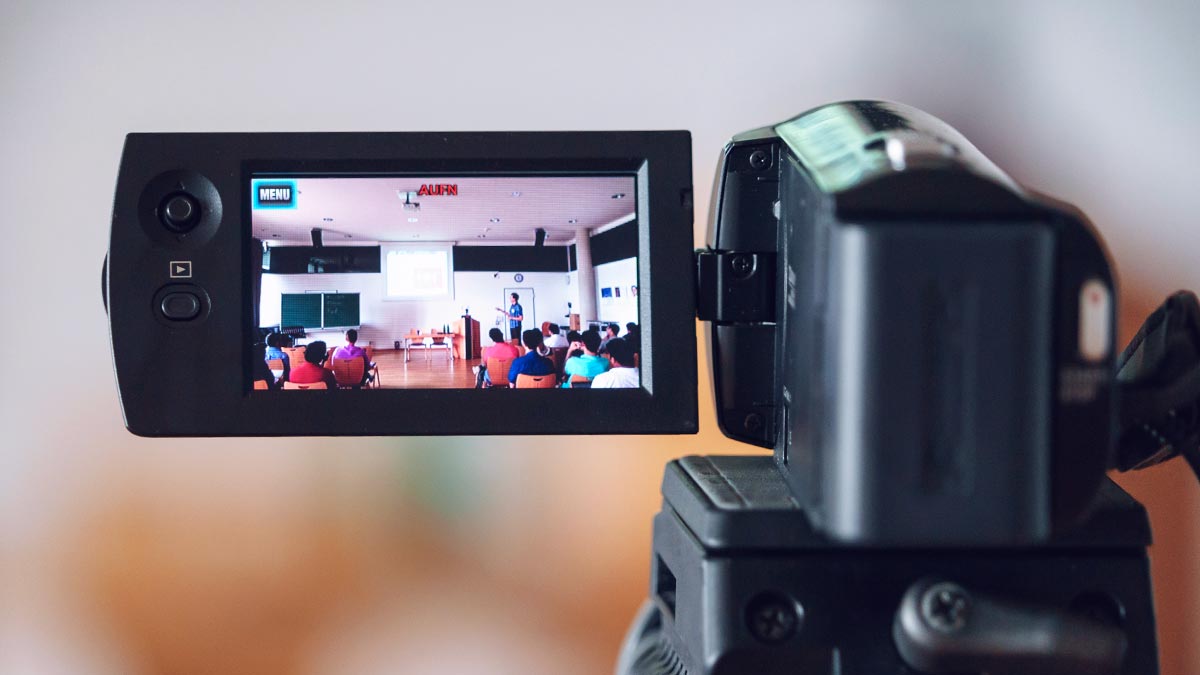“Lecture capture” is a term you’re sure to hear whenever AV and education are part of the same discussion. For good reason: lecture capture is one of the most common applications for video in education today.
Looking for clarity on what lecture capture means? Read through our blog to get a full understanding.
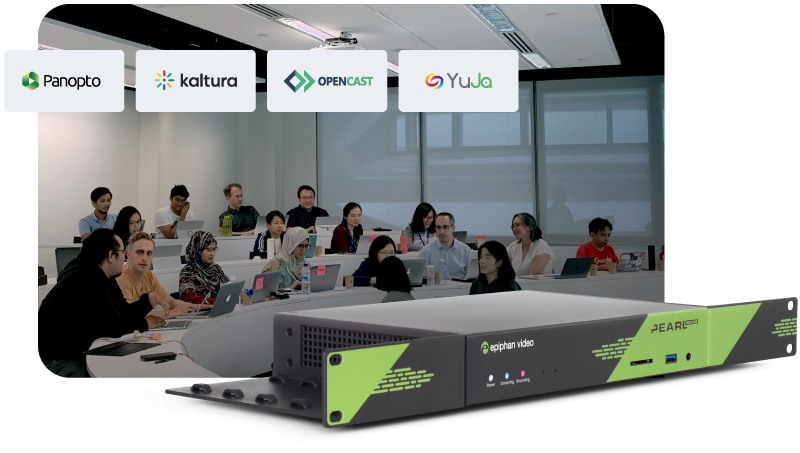
Simplify lecture capture with seamless video solutions
Learn moreIf you’re clear on the basics and looking to get your system sourced and set up, see our guide on lecture capture solutions.
What is lecture capture?
“Lecture capture” is used as shorthand for a range of video applications in education. At its core, though, the term refers to the recording of live lectures for students to watch back (or for the first time) later.
The reasons why this capability appeals to students – and, in turn, why colleges and universities would do well to put it in place – are compelling:
- Flexibility – If students can’t be present while a class is happening, they can catch up on the course material when they do have time by watching the recording.
- Comprehension – Students who feel behind or want a refresher on a key concept can review the relevant lesson(s) on demand. Lecture recordings also make great study aids for upcoming exams.
- Accessibility – On-demand lecture videos can support the success of students with disabilities or learning impairments, and any who are out of class frequently for health reasons.

Key components of lecture capture
What does the typical lecture capture setup look like? Generally, there are five key components:
- Video source(s) – Cameras, a laptop running a slide deck, a tablet or other mobile device, etc.
- Audio source(s) – Microphones, sometimes paired with a mixer or an in-room audio system
- Video encoder – A general-purpose computer running a recording application, or a dedicated appliance purpose-built for recording and/or streaming
- Video content management system (CMS) – E.g., Kaltura, Panopto, YuJa, Opencast, Echo360
- Learning management system (LMS) – E.g., Canvas, Blackboard Learn, Moodle
The first two items are self-explanatory. The rest could do with some further explanation. To that end…
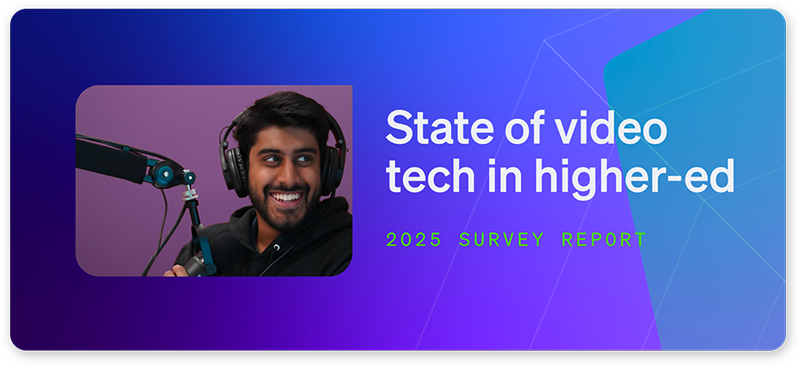
2025 State of Video in Higher-Ed Report
Get a firsthand look at the mindsets, strategies, and tech shaping tomorrow’s classrooms. Download it now:
What’s a video encoder?
The video encoder is the central piece of lecture capture technology. To avoid getting too in the technical weeds: it’s basically the software or device that takes care of the recording. Accordingly, video encoders come in two varieties:
- A software encoder is an application for video recording or streaming that runs on PC or Mac hardware. Some run in your web browser but most are standalone apps. OBS, Panopto Recorder, and Kaltura CaptureSpace Recorder are a few examples.
- A hardware encoder is an appliance purpose-built for video streaming and recording. All the components inside were handpicked or designed for this purpose and the underlying software specially engineered for it.
Software or hardware?
Every educational institution that embarks on lecture capture faces the question of whether to use software encoder or a dedicated hardware appliance.
So, which is best: lecture capture software, or lecture capture hardware?
The short answer is that hardware encoders perform far more reliably than software and offer unique ways to streamline your lecture capture workflows for maximum efficiency. For a full breakdown of the differences, and to better understand the advantages of hardware-based lecture capture, check out our blog all about hardware vs. software encoding. Also check out our blog comparing how to record lectures with hardware- and software-based approaches.
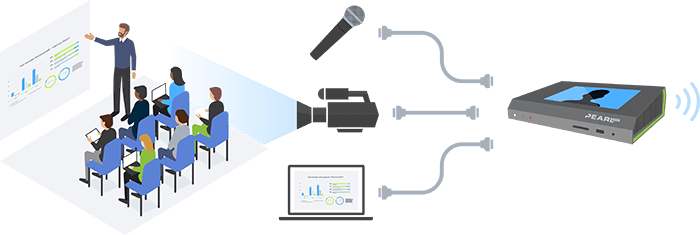
What’s a CMS?
A content management system (CMS) is a web portal used to store, manage, and distribute video content. Deploying one of these is a must for schools that create lots of video content. Many include features like live stream and recording session scheduling, analytical tools that provide actionable insight into how students are engaging with your video content, and video editors for trimming and annotating.
Most CMSs are searchable, letting students quickly find moments within lectures based on keywords, whether they’re embedded in a snippet of an instructor’s speech or a line on a PowerPoint slide.
Searching for a CMS for your school? Check out our blog on the best video platforms for education.
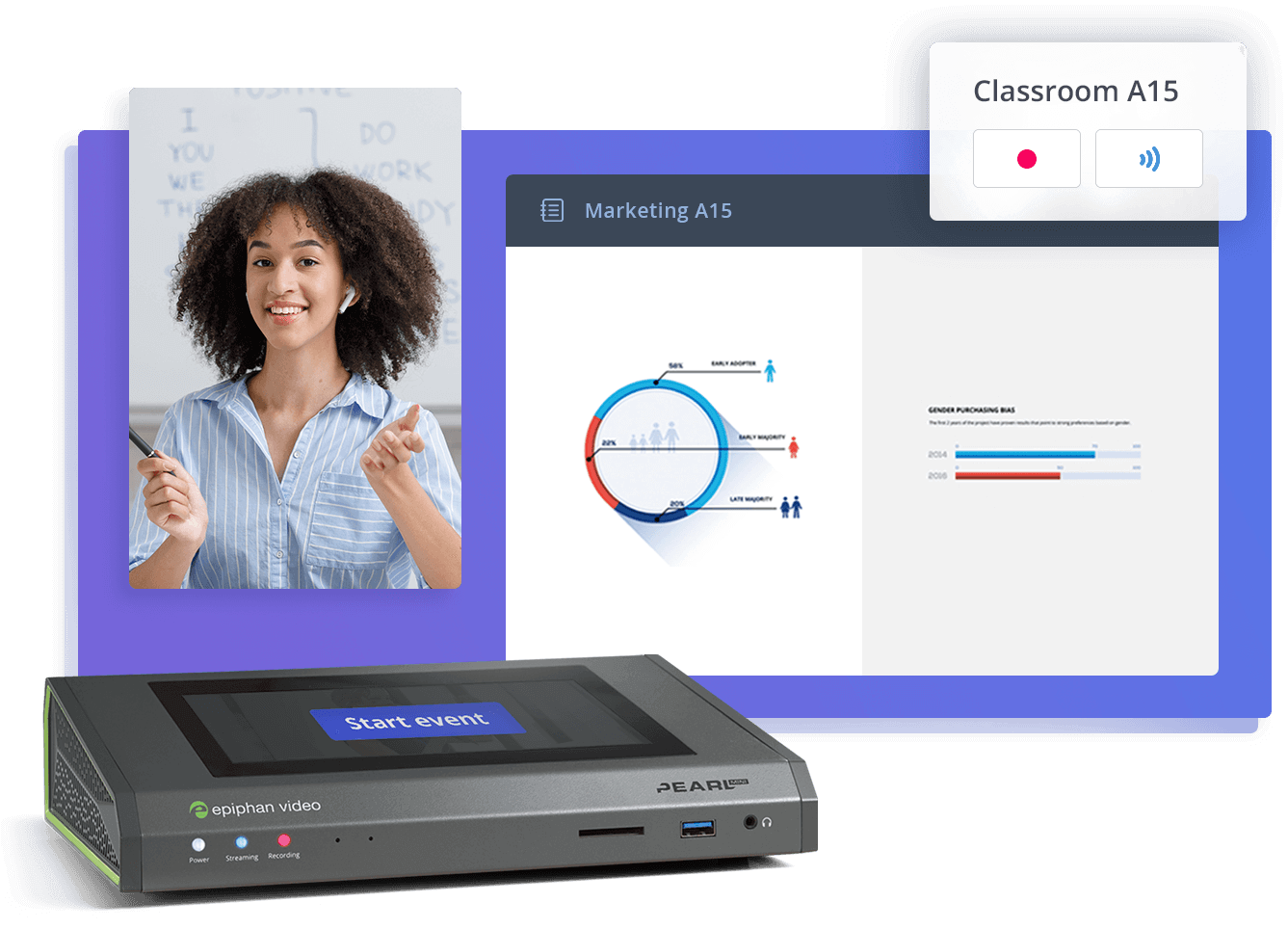
Equip your campus with best-in-class video solutions
Meet your school’s video production needs with a lineup of flexible and scalable hardware for video capture, streaming, and recording – all centrally managed. Perfect for lecture capture, online learning programs, and more.
What’s an LMS?
A learning management system (LMS) is a web-based portal where students can access content for courses they’re enrolled in, submit assignments, see their grades, and so on. An LMS may include tools for managing and delivering educational video content, but they’re primarily meant as platforms for professors and instructors to create and deliver online course content (lesson slide decks, multiple-choice quizzes, etc.), and measure student performance.
Ideally, you can integrate your video CMS and LMS to streamline your video production and grading workflows. For example, some CMSs can feed quiz scores from interactive videos directly into students’ LMS gradebooks.
Despite their different functions, schools often treat CMSs and LMSs as one and the same. That’s understandable: in some cases, the integration between CMS and LMS is refined enough to render the CMS invisible to everyone but the IT team. Just know that, when it comes to setting up or updating a lecture capture system of your own, the CMS and LMS are two distinct parts.
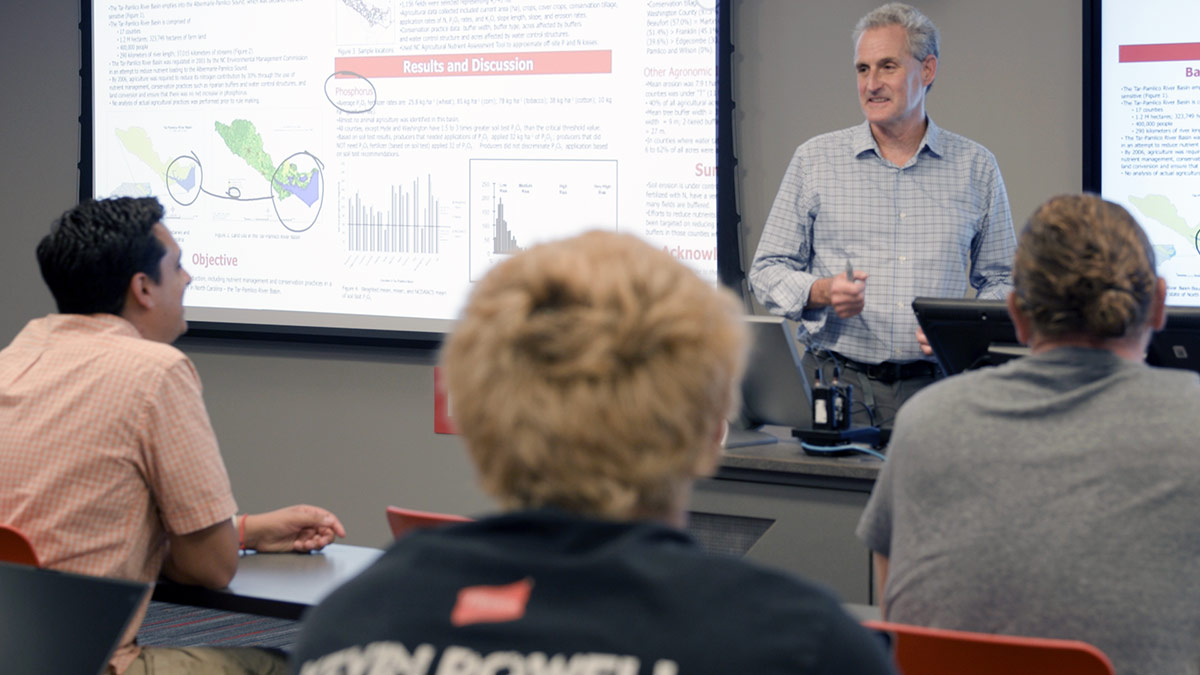
Get Inspired: How NC State supercharged 200+ classrooms
Supported by Epiphan’s all-in-one Pearl production systems, NC State created a seamless lecture capture solution that covers the entire campus.
Watch video nowHow lecture capture works
You have your video and audio sources, video encoder, CMS, and LMS. What happens next? A properly integrated lecture capture workflow will go something like this:
- Video and audio sources transfer signals to the video encoder, whether that’s hardware or software based.
- The encoder captures and combines the sources into a digital format. Ideally, the system will automatically upload any resulting recordings to the CMS.
- The CMS processes and stores the lecture capture content.
- On demand, the LMS communicates with the CMS to play back the lecture recordings for students.
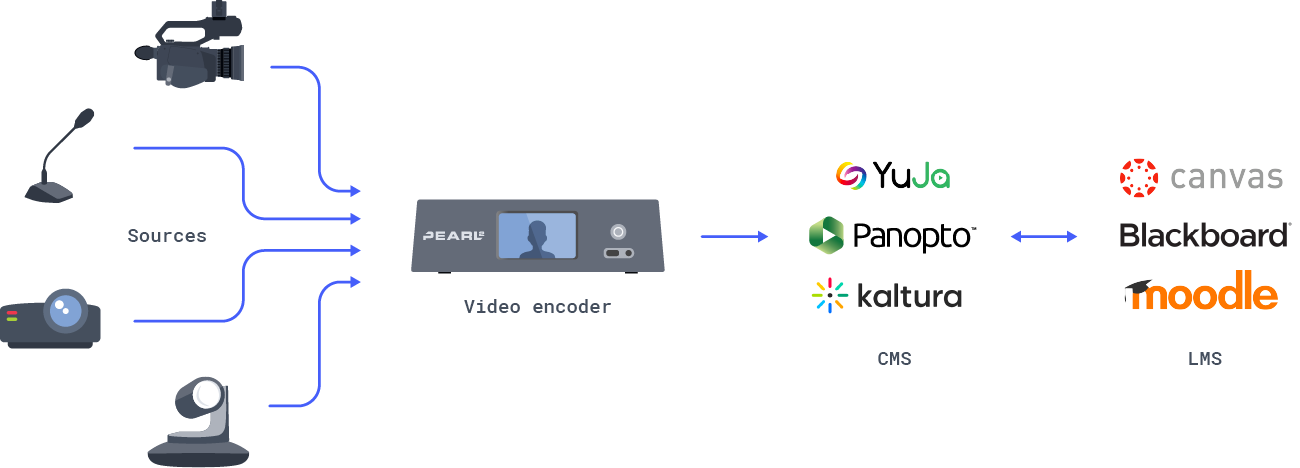
Create best-in-class lecture recordings
An Epiphan Pearl video production system is the best way to record video, whether the subject is a lecture in a traditional classroom, flipped classroom content in a dedicated lecture recording studio, a convocation ceremony in a sprawling event hall – whatever your school needs.
Purpose-built for recording and streaming, Pearl hardware encoders make it easy to create videos that look and sound professional. And with comprehensive Kaltura, Panopto, Opencast, and YuJa CMS integrations, uploading and managing all your lecture capture content is also a snap.
To learn more about Pearl and our other products and services, check out our dedicated page on Epiphan solutions for education.
